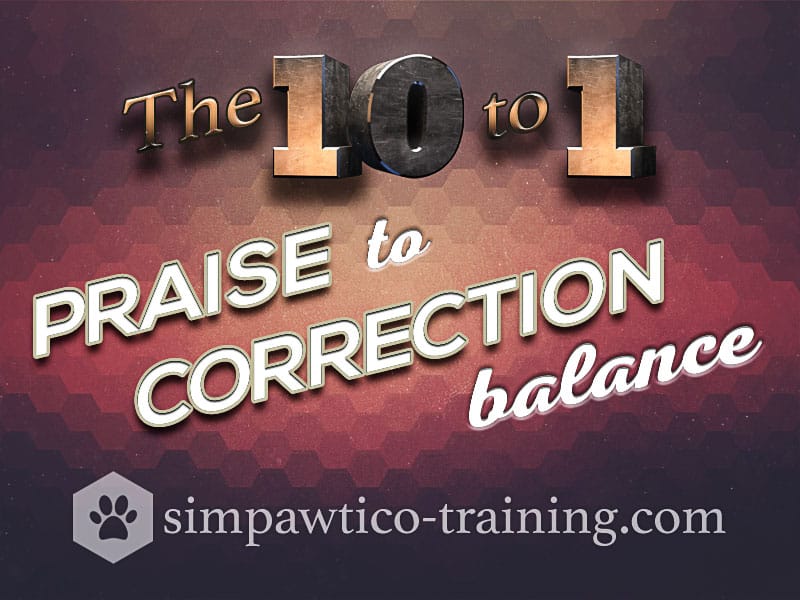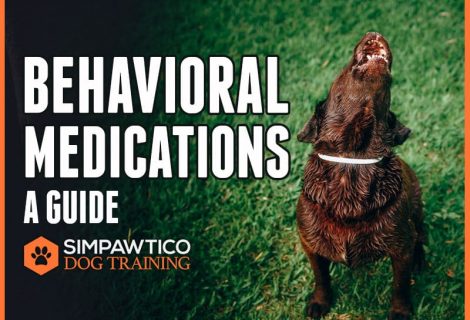Talking to Your Dog: the 10 to 1 Dog Training Praise Balance
One thing I notice when working with people is how little they communicate with their dogs while doing something. Positive reinforcement is about encouraging dogs to do the right thing and then keep doing it. You’d think this concept is a no-brainer, but humans, it seems, tend to discourage incorrect behaviors more than we like to dole out praise and recognition. Talking to your dog and focusing on communicating what works and what’s right is a key part of successful dog training. The 10 to 1 Dog Training Praise Balance is a simple approach to this problem!
You catch more flies with honey than with vinegar
Tipping the praise-to-criticism ratio isn’t a new concept. This same approach is recommended for solid parenting, strong marriages, for effective business leadership…heck, there are dozens of books written about this subject. Entire educational programs are designed to teach this! It’s the linchpin concept for Dale Carnegie’s ultra-famous book, How To Win Friends and Influence People.
It is the same for a dog. It’s simpler, in fact, to implement with a dog than with people, for crying out loud. I have talked about MARKERS before in other posts. This is how you communicate, “YES! That’s what I wanted!” Markers are a critical tool in giving your dog the feedback he or she needs to do what you want.
When I teach loose leash walking, people will usually correct their dogs immediately when they’re not walking as the owner expects. However, I have to coach them to be just as vocal constantly–if not more–when their dogs are doing it right.
This trickles down to all the other behaviors as well. The owners that talk a lot to their dogs tend to get better results than the ones who are largely silent. Talking, however, by itself isn’t the key; It’s the marking and the subsequent praise that is the secret.
Some general rules of thumb
As the noted veterinary behaviorist, Dr. Ian Dunbar, has said, “Your voice is #1 training tool.” In fact, using your voice is one of Simpawtico’s Master Keys. Write more about how important it is to use your voice for dog training.
Using your voice is one of the most powerful tools for dog training. Your words can make all the difference in how your dog behaves and responds to you. At its simplest, talking to a dog lets them know you are there and that they are not alone. This helps build trust and encourages positive behaviors.
Talking more specifically can also be used to provide instructions, reward good behaviors, and redirect bad ones:
- Whenever your dog does something you like, let them know with a marker (“Yes!” or “Good”) immediately. It helps keep their behavior on track and encourages them to continue the same behavior even if they might be trying something new.
- Use varying tones when talking so your pup can differentiate between commands, praise, and analog feedback. This will help them better understand your words and respond more quickly.
- Speak clearly, using consistent and simple words or phrases for commands like “sit,” “down,” and “come.” This ensures that your pup knows exactly what you want them to do.
- When providing feedback on mistakes, it can be beneficial to use a neutral tone. If your pup has made an error, you don’t want to communicate that they’re “bad;” you want them to try again. Adopting the tone of a game show host can be helpful in this situation. Speak in an encouraging and upbeat when they get it right. When they get it wrong, just let them know without judgment and help them get the right answer.
An appropriate combination of verbal praise and treat reward is the key to success.
I like to use a 10-1 ratio in my training sessions. That means I’ll offer 10 positive reinforcements every 1 time I have to pinpoint a mistake. This keeps things upbeat while also providing structure and reinforcement for good behavior.
Use your voice, but don’t overdo it.
You mustn’t repeat commands too often or too long, as this can lead to confusion, frustration, and decreased attention. You should also ensure you reward the desired behavior immediately after it occurs so your dog knows what they did right.
“But what if I’m a clicker trainer?”
Vocal praise should accompany a clicker program as well. Along with your markers and your praise, employ attention-getters rather than corrections: crisp noises like finger snaps, smooches, and tongue clicks. At Simpawtico, we use a lot of auditory stimulators in our training. Sharper noises are easier for the dog to hear and travel over longer distances (and allow you to reinforce better behavior).
This is also why clickers, whistle pips, and “no-reward markers” (NRMs) like “Eh-Eh!” or “Tsch!” can be effective as well if used sparingly. NRMs and traditional corrections aren’t always necessary anyways since often it’s not that your dog is being willfully obstinate; it’s that they either aren’t paying attention or that they’re deciding if what you’re asking is in their best interest. Usually, getting their attention is all it takes to get even moderately trained dogs to comply. Notice that I haven’t even mentioned treats or rewards here. TEACHING trumps TREATING every time.
See also: How to Use Reward Scaling
Remember that positive reinforcement only works if you’re consistently reinforcing good behavior. I know that’s a “No duh” statement, but as I said, I must keep reminding my (human) students to be vigilant in their praise. Ideally, training is most effective when a “No” kind of marker is never used. But we’re human. We say it. When you do, remember the 10:1 ratio. “Yes” teaches much more than “No” ever will, so talk to your dog!










